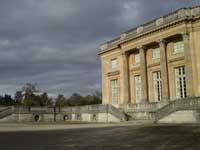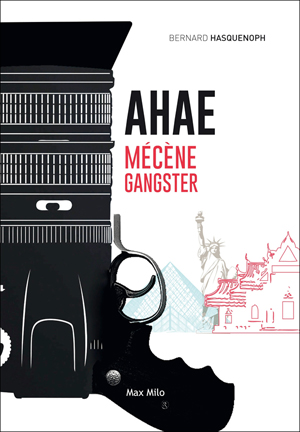
15.09.2006 | TODAY, THOSE WHO LOVE the “Hameau de la reine” (Queen’s Hamlet) pull a long face. For now they charge an admission for this haven of peace, and we must thank the Chairwoman of Versailles’ public institution for that. Christine Albanel, who, as far as we know, has no competence for the job, had only been appointed when she declared her ambition to make “a small business” of this national treasure, to run it keeping with “business principles” with an “obligation to get results”. And she here proves it. In order to justify this measure, two types of arguments and authenticity. Untrue and illusory…
They now charge the admission to to the Hamlet because it is located within a new visitor area, “Marie_Antoinette’s Domain”. And yet the name is the only new thing about it since it covers knows areas, almost all accessible to the public until now. But the launching advertisement is subtle enough to give the illusion that it is new which is the number one rule to get the media’s attention. The domain’s showpiece is the “Petit Trianon”. Previously open to paying visitors, it alone justifies, according to the designers, that all the other sites should be charged, while most of them used to be free. And yet again, it will be closed to visitors at the end of 2006 during almost two years to be restored. But then visiting the English Garden and its factories, and the Queen’s Hamlet and its houses won’t be free during the works. The only free place, and that’s new indeed, will be a tiny cave. Quite an expensive novelty.
As for the rest, the access to this “magical places” are now limited to a glance from a guard-rail that blocks any real access. The visit with a lecturer of the little Queen’s theatre used to be possible without having to pay the admission to the Domain. This restriction was easilly understandable given how fragile it is. So, are we talking about places not known enough ? No : they were only protected because they were unfit for crowds of visitors. And why should a clearer access to these places – which is really limited to more advertisement -, their upkeep, preservation and restoration, why should all these lead to an additional cost for the visitors while these are the very missions of a public museum ? What a peculiar way of pretending to make a place more accessible by putting up a tariff barrier.
“To revive the places related to Marie-Antoinette comprehensively unifying them”… What they don’t say is that the Domain includes the “Grand Trianon”. And for a very good reason : it has historically nothing to do with Marie-Antoinette. How could any scientific credit be given to such a project ? If restorations have truly been made on some parts of the gardens in order to give them their original aspect, as the official information is proud to say, what it doesn’t mention is what isn’t quite original, like the Hamlet. In spite of having being saved from ruin in 1953 thanks to Rockfeller’s donation, it is mainly due to alterations and destructions dating back to Napoleon’s time. The marble inside the only (half)open house, and the Dairy disappeared during the French Revolution. The adjoining gardens have been recreated in 1934 which brought a major dispute at the time. Thus, the authenticity of Marie-Antoinette’s domain is mostly a delusion, just like any historical place, the fruits of thousands successive redevelopments. Why visitors should be lied to ?
Publicity makes Marie-Antoinette a sexist and outmoded fashion-victim, and thus allows to enhance a merchandising associated the Domain’s launching : the selling of her perfume, outrageously expensive. For a good cause since it is sold as a subscription for acquiring a piece of furniture she owned. What does it matter if it has already been acquired ! It give an historical aura to a product that is merely a creation inspired with the tastes of the time. The product’s authenticity argument playing on the pretence is a well-known practise of publicity. Which is a problem when it is done by a public institution when its mission should be to preserve the historicity of what it shows without sowing doubts. The illusion becomes a deception when one discovers, on the very grounds of the Hamlet, a vineyard that has been planted three years ago for commercial purpose. For a good cause, as usual.
The purpose of launching this Marie-Antoinette package on the cultural market therefore seems to be only the search of fresh money to the detriment of rigorously bringing the heritage to light. Rather worrying. It is kind of contradictory to pride oneself on getting more and more money from private patronage in addition to state grants, on the one side, and to increase ever more the entrance fee on the other, the way they do in Versailles, and not only for this new visitor area.
Shouldn’t the logic of cultural democratisation that founds the museum as a public service naturally tend to reduce as much as possible the visitors’ contribution in order to tend towards free entrance ? Of course, studies show that the entrance fee is not the main obstacle that prevent from coming those who don’t go to museums. But then it is also obvious that keeping raising the fee won’t make their access any easier. And yet, too many national museums keep doing this. That’s the pernicious effect of the withdrawal of state funding that drives the most emblematic museums to resort to the most questionable practices of the private sector in order to finance their running. At the price of jeopardising of the works of art, morally and then practically.
Soon to come Marie-Antoinette’s wine ! And I already have the slogan : “the wine that turn your head”. So trendy !
* The recent success of Sofia Coppola’s movie is in everyone’s mind
The author of this opinion column is Bernard Hasquenoph, founder of “Louvre pour tous”, a French movement in favour of free entry to public museums, partly published in the French newspaper LE MONDE on September 15th, 2006. It was translated by Camille Domecq.

